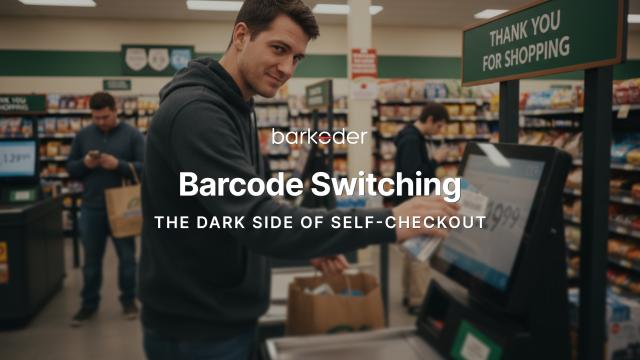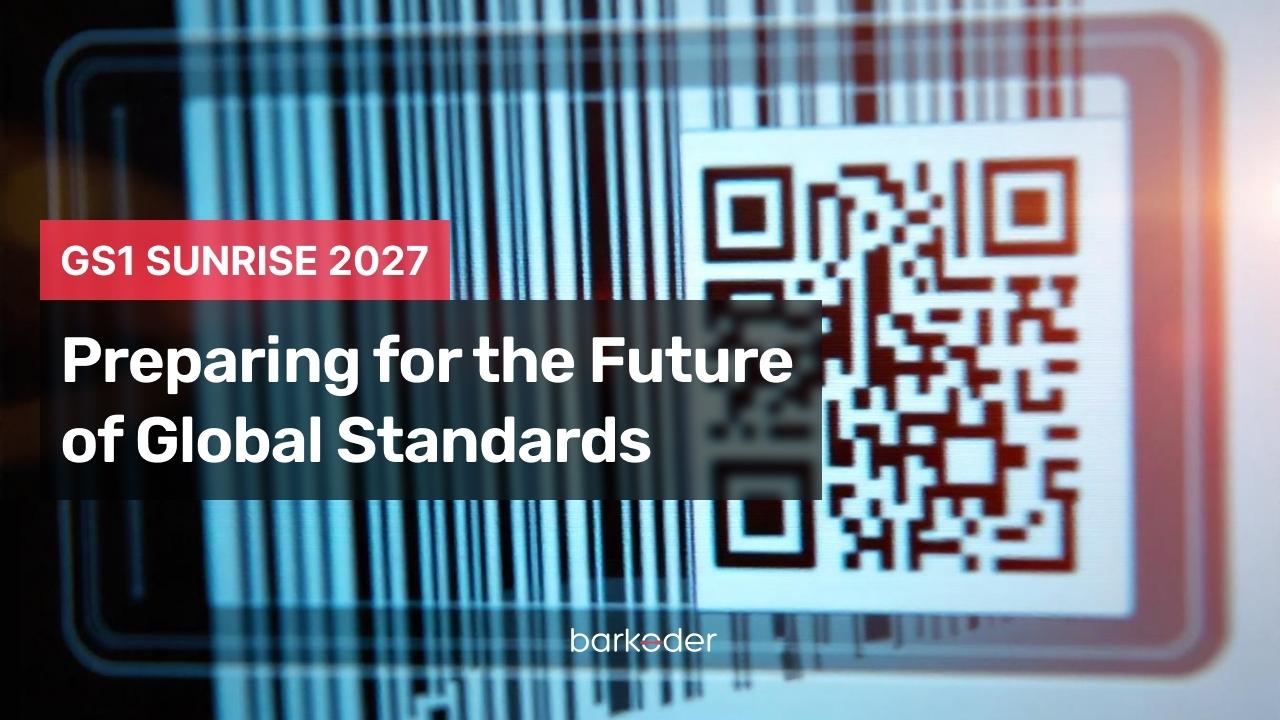
Get Ready for GS1 Sunrise 2027: Preparing for the Future of Global Standards
The countdown to GS1 Sunrise 2027 is well underway, marking a pivotal shift in the world of global supply chain standards. By this milestone, businesses across the globe are expected to fully transition to 2D barcodes, a move that promises to revolutionize industries from retail to healthcare. But what does this mean for your organization, and how can you prepare? Here’s everything you need to know to stay ahead of the curve.
2D barcode?
2D barcodes encrypt data with a matrix or pattern. Due to the fact that the information is encoded in both the vertical and horizontal dimensions of the pattern, the squares, dots, hexagons, and other shapes can hold considerably more data than linear codes (thousands of characters).
Depending on the application, a different form of barcode will be required. Linear codes are typically employed when the accompanying data changes in time (pricing or the contents of a container). When database access is unavailable, space is restricted and bigger volumes of data are necessary, hence 2D barcodes are employed.
A two-dimensional method of presenting data is a 2D barcode. It is comparable to a linear 1D barcode but can store more data in a smaller space. It can often store up to 350 times as much data as a 1D barcode.
The complexity of two-dimensional barcodes exceeds that of one-dimensional barcodes. They may include much bulkier information aside from text, such as prices, stock levels, or even an image of a product or a person. The Mobile Barcode Reader SDK by barKoder can scan the most heavily utilized 2D barcode symbologies (QR Code, PDF417, Aztec Code, DotCode and Data Matrix).
Understanding GS1 Standards and Their Impact.
GS1 is a global, non-profit organization dedicated to developing and maintaining standards for the business communication ecosystem. These standards are widely used across industries to ensure that businesses can share information efficiently and accurately.
Advanced GS1 barcodes are powerful tools that carry detailed information beyond basic product identification. They encode data such as product identifiers, shipment specifics, location codes, and critical attributes like serial numbers, batch numbers, and expiration or manufacturing dates. By adhering to globally recognized standards, GS1 barcodes enable seamless data exchange and end-to-end traceability across complex supply chains. This capability is particularly vital in industries such as retail, where accurate inventory management is key, and healthcare, where safety and compliance depend on precise tracking of medical products.
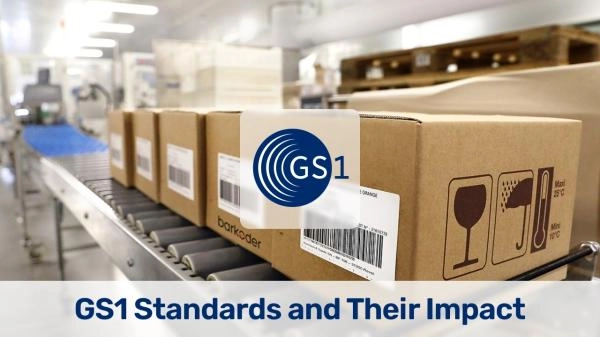
Why GS1 Matters:
GS1 standards provide a universal language for businesses, allowing systems and organizations to work together. By enabling accurate product identification and efficient communication, GS1 supports global trade, enhances consumer trust, and drives innovation in supply chain management.
Its significance spans across various industries for several reasons:
- Universal Language for Business:
GS1 standards provide a common language that enables seamless communication between companies, systems, and supply chains worldwide. - Enhanced Efficiency:
By standardizing processes like product identification, inventory management, and data exchange, GS1 reduces errors and streamlines operations. - Improved Traceability:
GS1 barcodes and identifiers enable end-to-end tracking of products, ensuring safety and compliance in critical sectors like healthcare and food. - Support for Innovation:
GS1 adapts to technological advancements with tools like GS1 Digital Link, bridging the gap between physical products and digital ecosystems. - Consumer Confidence:
Accurate and accessible product information builds trust with consumers and promotes transparency in marketplaces. - Global Reach and Collaboration:
Operating in over 100 countries, GS1 fosters collaboration across industries, driving innovation and consistency in international trade.
By providing reliable standards that cater to diverse industries, GS1 supports sustainable growth and enhances the global economy.
GS1 Sunrise 2027: what is it? GS1 Sunrise 2027: what is it?
GS1 Sunrise 2027: what is it?
GS1 Sunrise 2027 refers to the global initiative led by GS1—the organization behind the most widely used supply chain standards—to embrace 2D barcodes as the new standard for product identification. Unlike traditional linear barcodes, 2D barcodes, such as QR Codes and Data Matrix codes, can carry significantly more information, enabling enhanced traceability, transparency, and consumer engagement. By 2027, GS1 aims to transition from the traditional 1D barcodes (UPC/EAN) to 2D barcodes, such as GS1 DataMatrix, for better data capture and improved traceability in supply chains.
GS1 Sunrise 2027 is a significant step forward in leveraging digital tools to optimize the global flow of goods and data, benefiting businesses, regulators, and consumers alike.
This shift will impact industries like retail, healthcare, and logistics, enabling more detailed product information and enhancing automation and data accuracy. The goal is to standardize data formats, improve supply chain efficiency, and support innovations like mobile scanning, Internet of Things (IoT) applications, and better product visibility across industries.
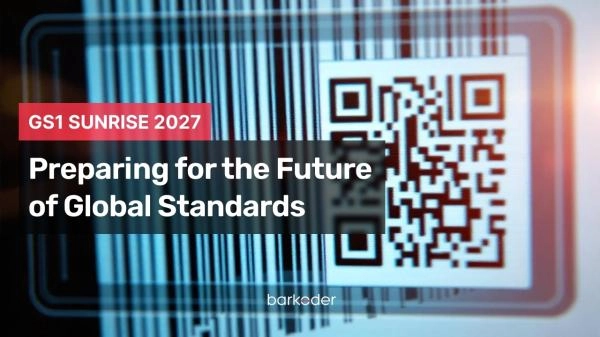
Why the Shift to 2D Barcodes?
The transition to 2D barcodes is driven by the need for more robust and versatile data-sharing capabilities. Here are some of the key benefits:
- Enhanced Data Capacity: 2D barcodes can store information beyond just the product identifier, including batch numbers, expiration dates, and even URLs.
- Improved Traceability: With more detailed data, businesses can track products through the supply chain more effectively, aiding in recalls and compliance.
- Better Consumer Engagement: Scanable by smartphones, 2D barcodes allow brands to deliver product details, promotions, and sustainability information directly to consumers.
- Global Alignment: Standardizing 2D barcodes simplifies international trade and ensures compatibility across markets.
Key Deadlines and Milestones
To ensure a smooth transition, GS1 has outlined critical milestones leading up to 2027:
- 2024: Stakeholders are encouraged to begin implementation trials.
- 2025: Early adopters demonstrate success, encouraging wider industry adoption.
- 2026: Infrastructure updates, such as scanner and software compatibility, should be in place.
- 2027: A full transition to 2D barcodes is expected, with linear barcodes being phased out.
How to Prepare for Sunrise 2027
Preparing for this shift involves a combination of technological upgrades, staff training, and collaboration with supply chain partners. Here’s a step-by-step guide:
- Assess Your Current Systems: Evaluate your existing barcode scanning and generation infrastructure. Identify areas that need upgrading to handle 2D barcodes.
- Engage with Stakeholders: Collaborate with suppliers, retailers, and technology providers to ensure alignment and a seamless transition.
- Train Your Team: Educate your staff on the benefits and usage of 2D barcodes. This includes training on new hardware and software systems.
- Update Packaging and Labeling: Start redesigning your product packaging to incorporate 2D barcodes. Ensure compliance with GS1 standards.
- Test and Iterate: Conduct pilot programs to test the functionality and efficiency of 2D barcodes in your operations. Use the insights to refine your approach.
- Communicate with Consumers: Inform your customers about the benefits of 2D barcodes, especially if you’re using them to deliver added value, such as detailed product information or interactive experiences.
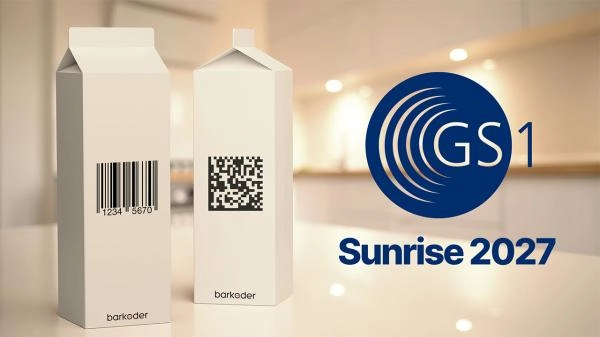
The Road Ahead
The move to 2D barcodes represents a significant opportunity for businesses to innovate and enhance their operations. By embracing this change early, you can position your organization as a leader in the new era of global standards.
Don’t wait until the last minute to prepare. Start planning for GS1 Sunrise 2027 today and ensure your business is ready to thrive in the future of supply chain innovation.
* This blog contains some information that has been obtained from the following sources: GS1






